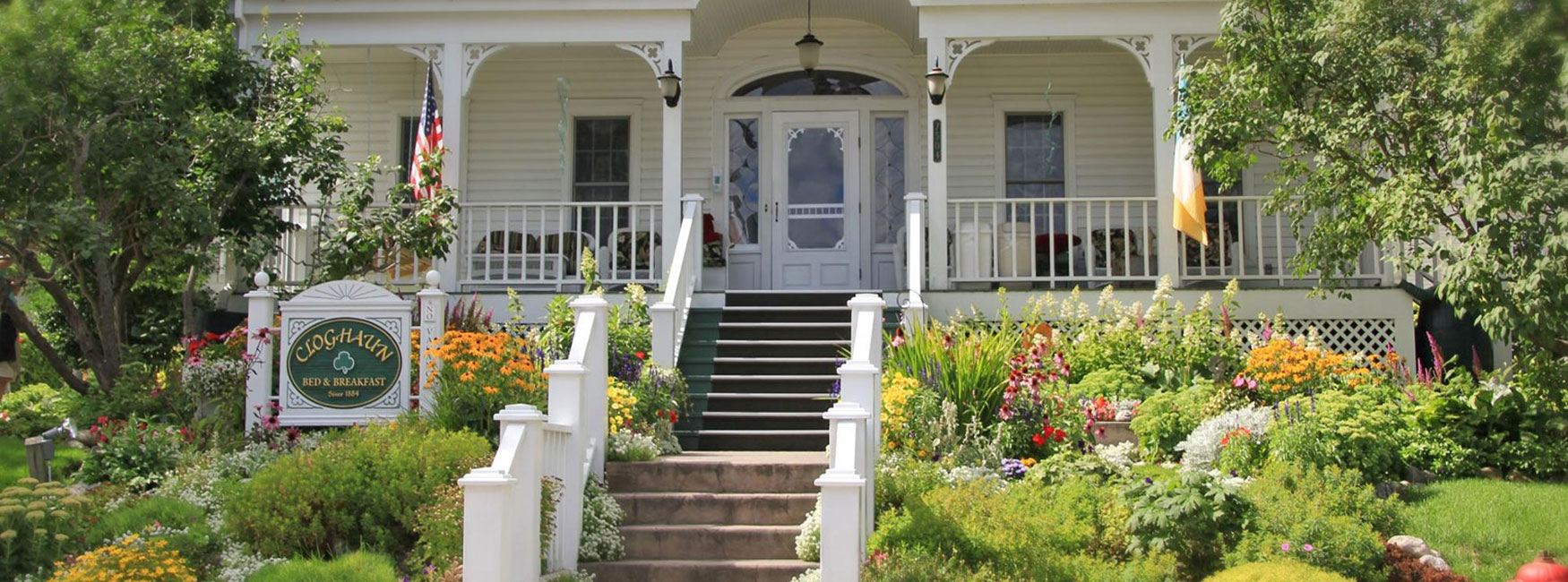Cloghaun Bed and Breakfast Mackinac Island History
Welcome to Cloghaun Bed and Breakfast (pronounced CLAH HANN), I’m Jim Bond, the owner. This grand home is one of the oldest houses on Mackinac Island and I am blessed to be the fourth generation to manage her. The house is filled with a wealth of antiques and accessories from the late 1800s, many of which are original to Cloghaun. Family photographs, dating back to the mid-1800s, are displayed throughout the house. It is my privilege to share Cloghaun Bed and Breakfast Mackinac Island, and her history with you.
The Beginnings of Cloghaun B&B
Cloghaun was built by Thomas and Bridget Donnelly, my great-grandparents. My great-grandmother, Bridget, was born in 1831 in Clew Bay near Westport, Ireland. My great-grandfather, Thomas, came from Cloghaun, a small town in Galway County, Ireland. They were married in 1848, in Liverpool, England, just before they sailed to America. Sixteen couples were married at the same time using the same Claddagh ring. The trip cost 10 pounds (or about $15 in U.S. currency) and took 36 days.
Bridget’s uncle, Charles O’Malley, was a resident on Mackinac Island and provided the funds for their emigration to America. Charles built the original Island House, one of the major existing hotels on the Island today, in 1852. He helped many of the Irish people escape the Great Famine (also known as the Irish Potato Famine) to seek a new life in America.

When Thomas and Bridget arrived in America, they made their way to Buffalo, New York, and stayed until the spring, as Bridget was pregnant with their first child. After Mary (the first of seven daughters) was born, they made the voyage to the Mackinac Island, where they stayed a short time before moving to Sault Ste. Marie. Thomas found work there as a laborer building the first lock in 1850. When the great waterway was completed in 1855, Bridget made the first trip through the locks on the Illinois, the only steamship on the Great Lakes at the time.
The following year, the Donnellys moved to Chicago with $500 in gold from Thomas’s work on the locks. Bridget put the gold in a local bank and that night, as the story goes, had a dream of seeing the bank’s shades pulled down and a bench overturned in front. The next morning, Bridget was back at the bank demanding her money. When they tried to give her paper currency she said, “Gold I brought and gold I’ll take.” It may have been “the luck of the Irish,” as the bank closed that very night.
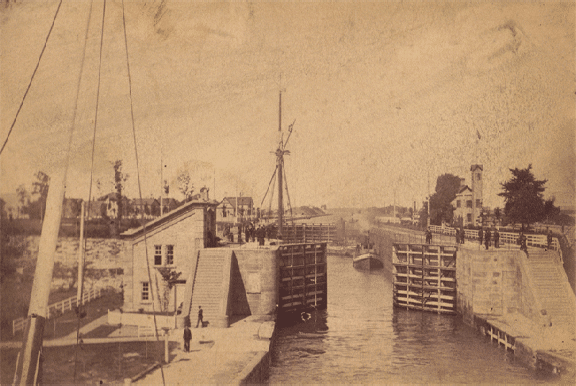
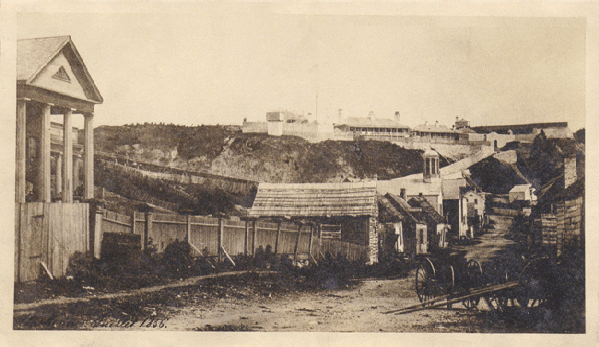
Thomas and Bridget moved back to Mackinac Island and used the gold to buy the land where Cloghaun now stands. This was seven years after they had first arrived on the Island. The lot was purchased in 1859 from Mrs. Abbott whose Grecian-columned house was destroyed by fire in 1856. Shot from what is now Hoban Steet, the Island’s “first photograph” was taken to get a “fine view of the Fort.”
Prior to the building of Cloghaun, the Donnelly Family lived in a house next door to the present home. Starting in 1880, it took four years to build Cloghaun. The wood for the house cost $700 and was handpicked in Cheboygan, Michigan and shipped to the Island. The family had now grown. Mary was followed by James (Jamie), Bridget, Catherine, William, Patrick, Anna, Margaret, Helen (Nellie), Adele (Dellie) and Henry. Several babies died at birth. Jamie died at just 12 years old from pneumonia while working on the fishing boats with his father, Thomas, who had joined the burgeoning fishing industry. Patrick died of tuberculosis at age 55.
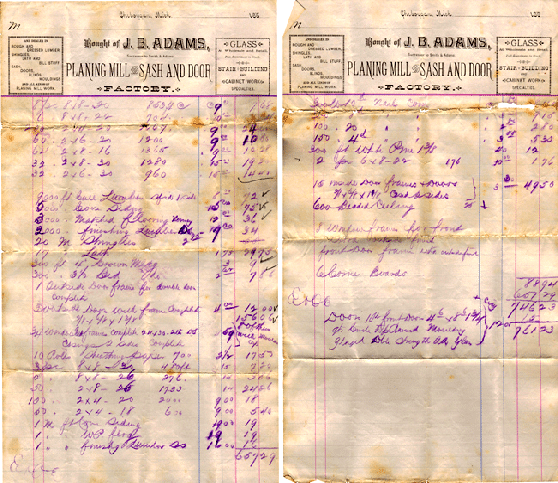
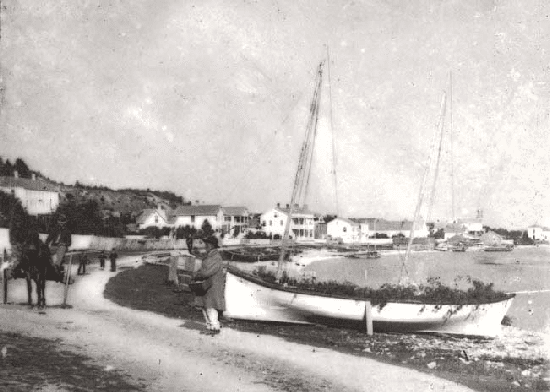
While it was the fur trade that established Mackinac Island, the waters surrounding the Island roved plentiful for fishing. Soon, the fishing industry was booming. The Island’s unique location in the Straits of Mackinac made exporting the new commodity as profitable as the furs and pelts that fishing would eventually replace, while leveraging many of the same distribution routes.
Like many coastal fishing communities, the local sea conditions required the development of specialized equipment. Here, the Mackinac boat was developed. These small, twin-mast vessels were used to haul in the nets loaded with whitefish. Today, locally caught whitefish is harvested in much the same way. Thomas sold his catch of fresh fish in the summer months and in the winter packed salt fish in barrels, made in the Doud cooperative, for export. Thomas sold a four- or five-pound whitefish for as little as 10 cents, but the high volume made it a profitable business.
Following Thomas’s death in 1882, Bridget finished the Cloghaun. Eventually, she began to accommodate the Island’s growing tourist population. The house was known as the Donnelly Cottage. After Bridget’s death in 1910, two daughters, Adele (Dellie) and Helen (Nellie), took over management of the house. Their sister, Dr. Anna Kelton, widow of Major Dwight Kelton, a former officer at Fort Mackinac, joined them in 1925. Anna’s graduation certificate from osteopathic school is displayed on the second floor.
As Post Quartermaster, Major Kelton is credited for converting the upper floor of the North Blockhouse at Fort Mackinac into a water storage tank. He also ran pipe from the blockhouse to various buildings within the fort thus eliminating the necessity of hauling water. The horse-powered pump began operation on October 11, 1881. Dwight was also an accomplished author whose works include Annals of Fort Mackinac and Indian Names—both were entered into the Library of Congress in 1888—as well as Indian Names of Places Near the Great Lakes, and History of the Sault Sainte Marie Canal. A picture of Major Kelton hangs in the Kitty Suite (Room #8).
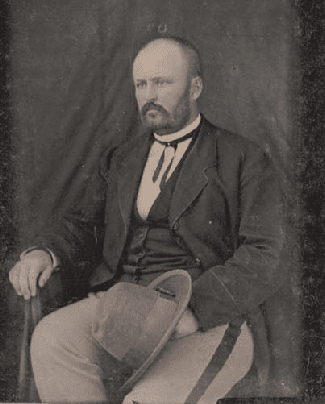
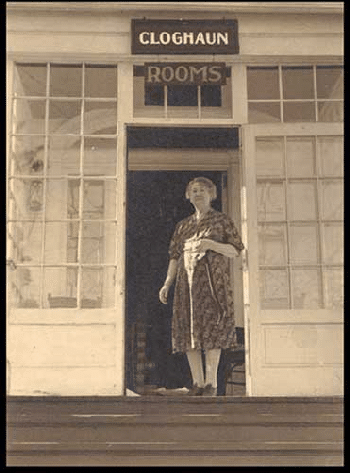
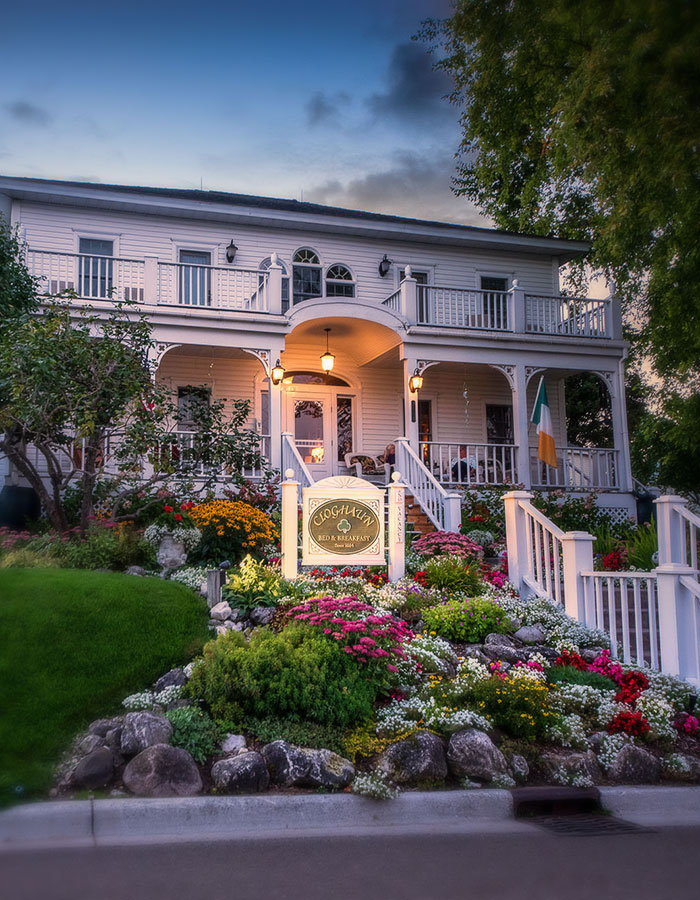
Margaret, another of Bridget’s daughters, went to Detroit in 1881 at the age of sixteen to receive training at Western Union. She returned to manage the Mackinac Island office. Margaret married John McArdle in 1901 after an eight-year engagement. John was a supervisor for Western Union in Detroit. Their children were Katherine (Kitty), Anita, Susie, and Jack.
Nellie eventually took over the Western Union office for Margaret, who was transferred to St. Ignace, and continued to manage the Island office for over twenty-five years. It was Nellie who named the house “Cloghaun,” which is Gaelic for “stony ground”.
My father, James Thorpe Bond, died in 1955. Nellie died in 1958. After her death my mother, Kitty, and my Aunt, Anita McDonnell, managed the house during the summers and were schoolteachers in Detroit in the winter. Anita died in 1984.
Kitty, my mother, had a great love of Cloghaun, Mackinac Island, and all its history. She died in 1991 at the age of 80. Sadly, she did not live to see the completion of the renovation of Cloghaun Bed and Breakfast, which began in 1990. I believe that she would have been proud of the improvements.
We hope that you come visit and see for yourself. Check Availability and begin planning your stay.
I look forward to sharing Cloghaun with you,
James (Jim) Bond


